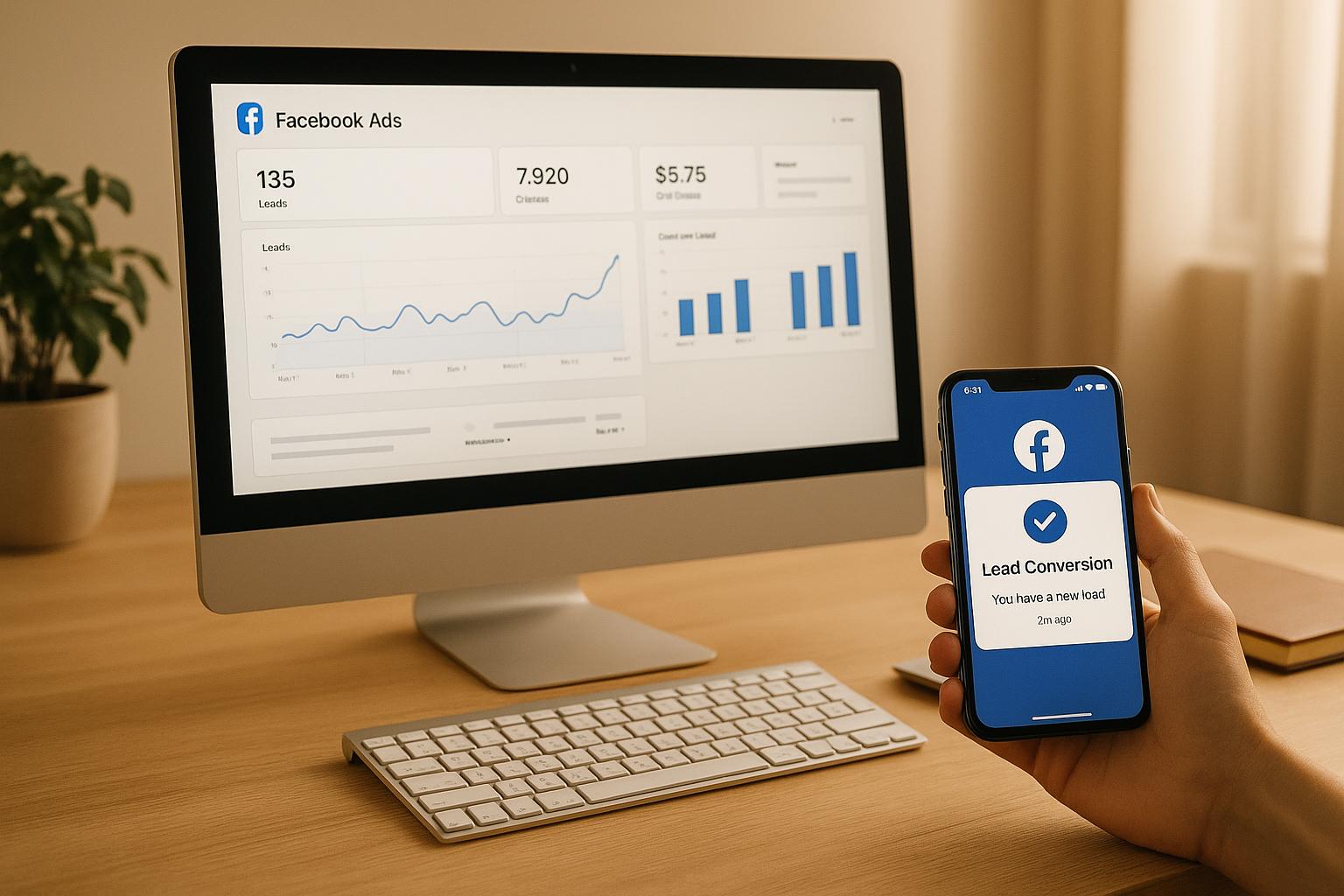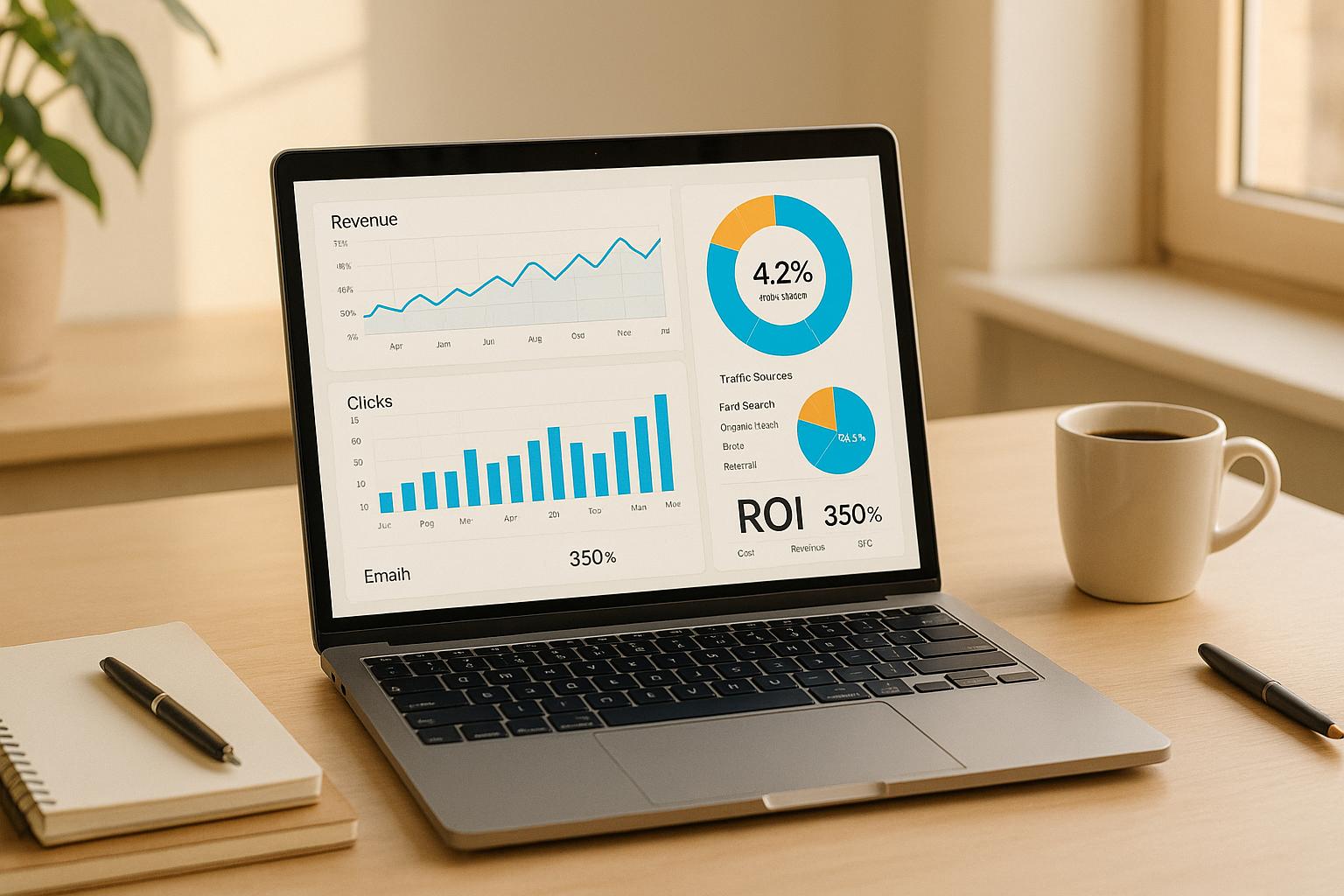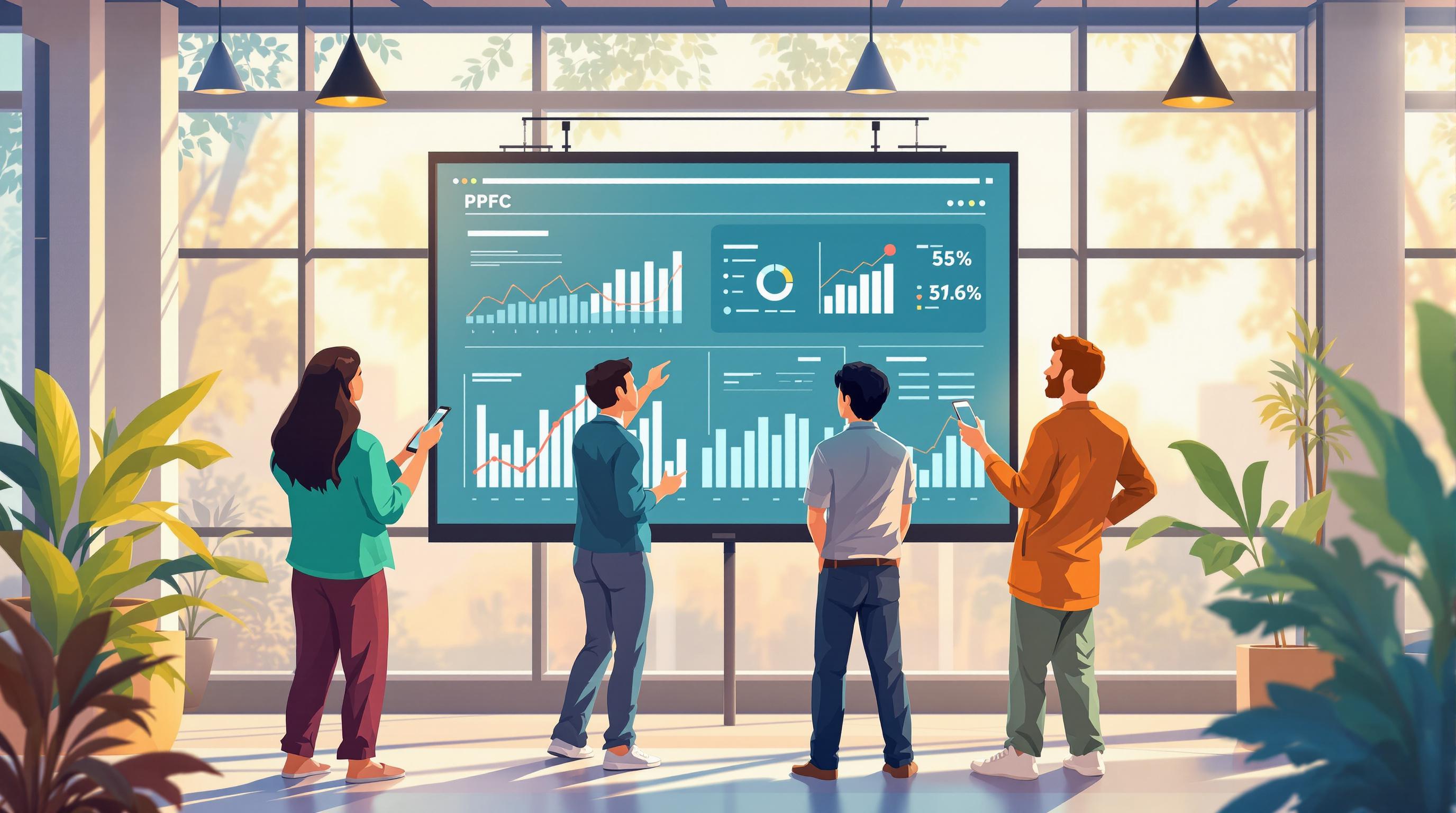Running PPC campaigns manually can be overwhelming. Automated bid adjustments simplify this by using real-time data to optimize bids and improve results. Here's what you need to know:
-
Key Benefits:
- Adjust bids instantly based on market changes.
- Save time by automating tasks like budget allocation and performance analysis.
- Improve campaign performance with data-driven decisions.
- Scale easily, even for large campaigns.
-
How It Works:
- Analyzes factors like device type, location, time, and audience behavior.
- Continuously updates bids to maximize conversions and ROAS (Return on Ad Spend).
- Combines multiple rules (e.g., device and time-based adjustments) for better results.
-
Setup Tips:
- Define clear goals (e.g., higher conversions or a specific ROAS).
- Track performance metrics like CPC (Cost Per Click) and conversion rates.
- Use tools tailored to your campaign size and complexity.
Automated bidding saves time, reduces costs, and improves performance, making it essential for scaling PPC campaigns. For detailed guides and tools, visit Top PPC Marketing Directory.
The Power of Automated Bidding & Consolidation for PPC ...
Understanding Bid Adjustment Systems
Automated bid adjustment systems use real-time data to fine-tune PPC bids, helping campaigns run more efficiently and scale effectively. These systems analyze critical factors to keep campaigns performing well while expanding. They also integrate smoothly with broader campaign strategies to ensure constant improvement.
Key Adjustment Factors
Automated systems rely on several signals to make bid decisions:
- Device Performance: Adjusts bids based on whether users are on mobile, desktop, or tablet.
- Geographic Signals: Modifies bids depending on user location and regional performance.
- Temporal Patterns: Looks at trends based on the time of day and day of the week.
- Audience Behavior: Uses data like demographics, interests, and past user interactions.
Real-Time Bid Updates
Bid adjustments happen continuously through a feedback loop:
- Data Collection: Performance metrics are gathered from all active campaigns.
- Signal Processing: Algorithms analyze trends like conversions and return on ad spend.
- Bid Modification: Adjustments are applied automatically to meet campaign goals.
Combining Adjustment Rules
When multiple bid adjustments are applied, understanding how they interact is crucial. Here's a breakdown of common adjustment types and how they work together:
| Adjustment Type | Primary Impact | Interaction Notes |
|---|---|---|
| Device | Changes base bid based on device type | Often combines with other adjustments |
| Location | Adjusts bids by geographic area | Works alongside audience targeting |
| Time-based | Varies bids by time and day | Can pair with device-specific rules |
| Audience | Alters bids for certain user groups | Integrates with other targeting tools |
Advanced automation platforms manage these overlapping rules automatically, ensuring adjustments are applied in ways that improve overall campaign performance.
Benefits of Automated Bidding
Automated bidding systems offer a range of advantages that make managing PPC campaigns more efficient and effective, especially when scaling efforts.
Saving Time and Resources
Automation takes over tasks like:
- Constantly monitoring and adjusting bids
- Analyzing performance data
- Allocating budgets efficiently
This frees up campaign managers to focus on strategic decisions while improving overall campaign results.
Improving Campaign Performance
Automated systems adjust bids in real time, using data to maximize conversions. These real-time changes ensure campaigns perform better by targeting the right opportunities at the right moment.
Handling Large Campaigns
For large-scale campaigns, automation is a game-changer. It simplifies management by reducing manual effort, even as campaigns grow in size. Resources like the Top PPC Marketing Directory can help businesses find tailored solutions to optimize and scale their campaigns effectively.
sbb-itb-89b8f36
Setting Up Automated Bidding
Get your automated bidding strategy up and running with these straightforward steps.
Initial Setup Steps
- Set Campaign Goals: Clearly define what you want to achieve, whether it's boosting conversions, hitting a target ROAS, or maintaining a specific impression share.
- Configure Conversion Tracking: Make sure you're accurately tracking key actions that align with your business objectives.
- Set Budget Parameters: Determine daily and campaign-level budgets to avoid overspending.
- Define Bid Limits: Establish maximum and minimum bid amounts to maintain control while letting automation do its job.
After setting everything up, keep a close eye on how the system performs to ensure it aligns with your expectations.
Performance Checks
Keep tabs on conversion rates, CPC, budget pacing, and ROAS on a regular basis. Adjust bid limits and refine your strategy as needed based on performance trends.
Suggested Monitoring Schedule:
| Timeframe | Metrics to Watch | Actions to Take |
|---|---|---|
| Daily | Conversion rate, CPC | Identify unusual patterns |
| Weekly | Budget pacing, ROAS | Make bid adjustments |
| Monthly | Overall trends | Refine your strategy |
For the first two weeks, daily reviews are especially important to catch any unexpected issues early.
Finding PPC Tools
Having the right tools can make a big difference in your automated bidding success. If your campaign budget is under $10,000 per month, consider using verified automation tools. When selecting a tool, think about:
- The size and complexity of your campaigns
- How much automation you need
- Whether the tool integrates smoothly with your current systems
- The availability of support and training resources
Check out Top PPC Marketing Directory for a list of trusted PPC tools that suit your campaign needs.
Performance Analysis
Main Success Metrics
Key metrics to watch:
- Cost Per Click (CPC): Keep an eye on how automated bidding impacts your average CPC. The goal is to lower CPC while keeping conversion quality steady.
- Conversion Rate (CVR): Check how automated bids drive qualified traffic. Compare this to results from manual bidding to gauge improvement.
- Return on Ad Spend (ROAS): Evaluate how much revenue you're generating for every dollar spent. Automation should either meet or exceed your target ROAS.
- Quality Score: Look at how bid adjustments influence quality scores. Higher scores can lead to better ad placements at reduced costs.
After tracking these metrics, dive deeper into your data to uncover areas for refinement.
Data Breakdown Reports
Breaking down your performance data can help you fine-tune automation settings. Here's how to segment your data effectively:
| Segment | Metrics to Analyze | Action Items |
|---|---|---|
| Device | CVR, CPC by device | Adjust device-specific bids |
| Time of Day | Hourly conversion trends | Refine ad scheduling |
| Geographic | Regional ROAS variations | Update location-based bids |
| Audience | Performance by audience | Modify audience bid adjustments |
Evaluate these segments weekly to spot trends and make informed changes to your automation. Pay extra attention to segments with noticeable performance shifts to maximize results.
Results Comparison
Here's a snapshot of how automation has affected performance metrics:
| Metric | Before Automation | After Automation | % Change |
|---|---|---|---|
| Average CPC | $2.45 | $1.95 | -20.4% |
| Conversion Rate | 3.2% | 4.1% | +28.1% |
| ROAS | 285% | 340% | +19.3% |
| Budget Use | 82% | 95% | +15.9% |
| Quality Score | 7.2 | 8.1 | +12.5% |
These comparisons are based on a 30-day period before and after implementing automation. Keep in mind that performance may vary initially as the system learns and adjusts.
For more detailed insights, consider using tools designed for PPC analysis. You can find reliable options in the Top PPC Marketing Directory to help optimize your campaigns further.
Summary
Automated bid adjustments can help scale PPC campaigns by reducing cost-per-click, improving conversion quality, and saving valuable time and resources.
Different tools cater to specific needs:
- For Small Businesses: Tools like PPC Pilot are designed for solopreneurs and small teams working with limited budgets.
- For Enterprises: Platforms such as BidBrain use advanced reinforcement learning to automatically optimize for conversions and revenue.
To get the most out of these tools, it's important to set them up correctly and monitor their performance regularly. This ensures a balance between efficiency and maintaining control over your strategy.
For a deeper dive into available tools and services, check out the Top PPC Marketing Directory. It’s a comprehensive resource covering everything from bid management to performance tracking, helping you make smarter decisions that align with your campaign objectives.
FAQs
How do automated bid adjustments make PPC campaigns more efficient than manual management?
Automated bid adjustments improve the efficiency of PPC campaigns by using real-time data and machine learning to optimize bids for each ad auction. Unlike manual management, which relies on human input and can be time-consuming, automated systems analyze factors like user behavior, device type, location, and time of day to adjust bids dynamically and maximize performance.
This approach not only saves time but also helps advertisers achieve better results by reducing wasted spend and focusing on high-value opportunities. Automated bidding ensures that your budget is allocated effectively, allowing your campaigns to scale while maintaining strong ROI.
What should I consider when setting up automated bidding to achieve my PPC campaign goals?
When setting up automated bidding for your PPC campaigns, it’s important to align the bidding strategy with your specific goals. Start by clearly defining what success looks like - whether it’s maximizing conversions, increasing return on ad spend (ROAS), or driving more clicks within a set budget.
Consider factors like your target audience, budget constraints, and historical campaign performance. For example, if your goal is to maximize conversions, you might use Target CPA (cost per acquisition) bidding, while Maximize Clicks may be better suited for driving traffic. Regularly monitor performance metrics to ensure the automated bidding strategy is delivering the desired results and adjust settings as needed.
Using tools and resources, such as those found on the Top PPC Marketing Directory, can help you explore the best solutions for managing and optimizing your automated bidding strategies effectively.
How can I track and evaluate the performance of automated bidding to ensure it aligns with my campaign goals?
To monitor and evaluate the performance of automated bidding, start by reviewing key performance metrics such as click-through rates (CTR), conversion rates, cost-per-click (CPC), and return on ad spend (ROAS). These metrics provide insights into how well the bidding strategy is meeting your campaign objectives.
Use tools like Google Ads' reporting dashboard or other PPC management platforms to analyze trends over time. Compare the performance of automated bids against your historical data to identify improvements or areas of concern. Adjust your campaign goals or parameters if the results aren’t meeting expectations.
Additionally, schedule regular performance reviews - weekly or biweekly - to ensure the bidding algorithm is adapting effectively to changes in the market or audience behavior. This approach helps you stay proactive and ensures your automated bidding strategy delivers the desired results.


